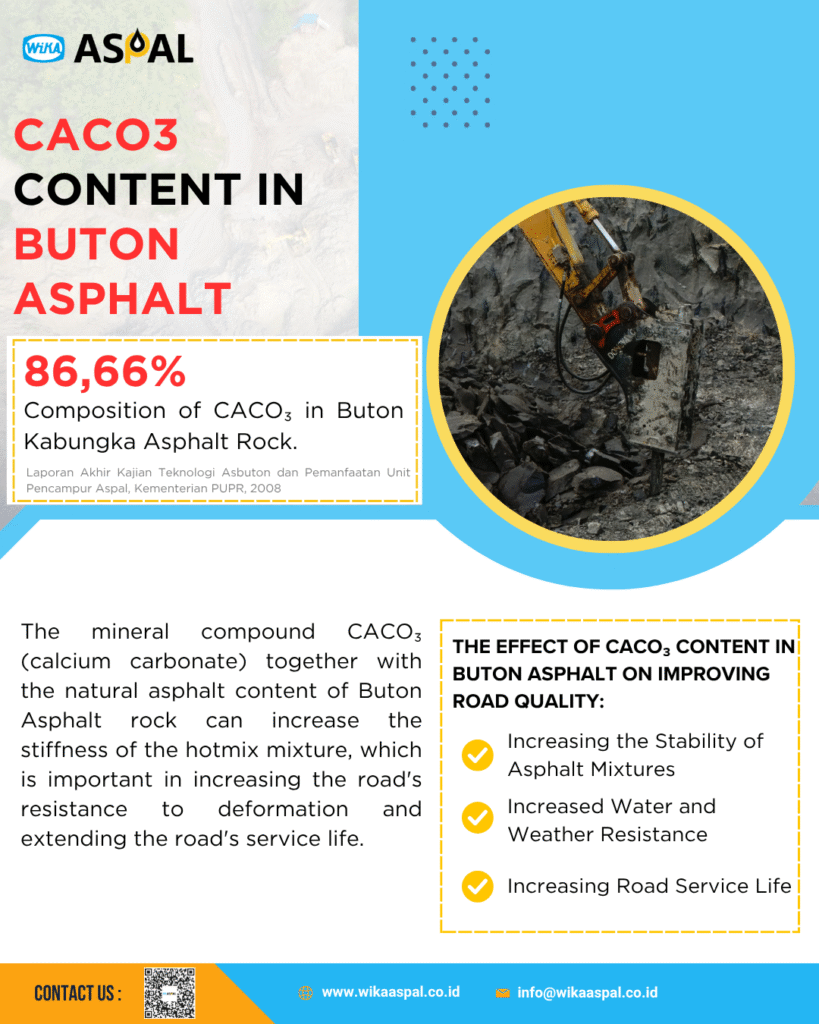Natural asphalt from Buton Island or better known as Buton Asphalt, has two main characteristics based on its rock structure, namely hard type Buton Asphalt and soft type Buton Asphalt. Both types contain two important elements, namely bitumen (natural asphalt) and mineral elements. The combination of these two elements greatly affects the performance of the asphalt mixture (hotmix asphalt) used in road paving work.
One example of high-quality Buton Asphalt is Buton Asphalt from Kabungka, which has a mineral chemical composition dominated by the compound CaCO₃ (calcium carbonate). This compound, together with its natural asphalt content, can increase the stiffness of the hotmix mixture, which is very important for increasing road resistance to permanent deformation (rutting) and extending the service life of the road pavement.
In addition to its mineral content, Buton Asphalt from Kabungka also has a high asphaltene content, which is a heavy component in bitumen. This asphaltene content is very beneficial because it increases the stiffness and bearing capacity of the asphalt mixture, making it suitable for use on roads with heavier traffic loads.
The use of Buton Asphalt in road works not only supports the quality of national infrastructure, but also provides a significant economic contribution to the producing region, namely Buton Regency. The use of Buton Asphalt can open up new jobs for local communities and increase local revenue and state revenue through taxes and royalties.
With all its economic benefits, Buton Asphalt is a superior solution to support the construction of strong, durable, and sustainable roads in Indonesia. Let’s increase the use of Buton Asphalt as a high-quality local product that can drive the progress of national infrastructure and regional welfare.
| Chemical Composition of Buton Kabungka Asphalt Rock Minerals | Chemical Properties of Rocks Buton Kabungka Asphalt | ||
| Compound | % | Compound | % |
| CaCO3 | 86,66 | Nitrogen (N) | 29,04 |
| MgCO3 | 1,43 | Acidafins (A1) | 9,33 |
| CaSO4 | 1,11 | Acidafins (A2) | 12,98 |
| CaS | 0,36 | Parafin (P) | 11,23 |
| H2O | 0,99 | Maltene | 1,50 |
| SiO2 | 5,64 | Nitrogen/Parafin | 2,41 |
| AI2O3 + Fe2O3 | 1,52 | Asphaltene | 39,45 |
| Residu | 0,96 | ||
Source: Final Report of Asbuton Technology Study and Utilization of Asphalt Mixing Units, Ministry of PUPR, 2008



